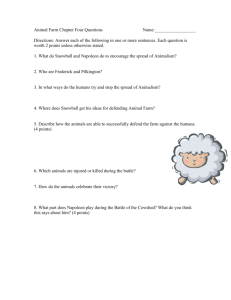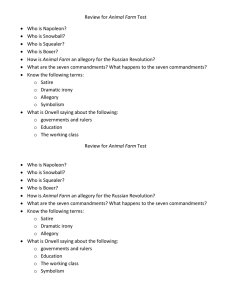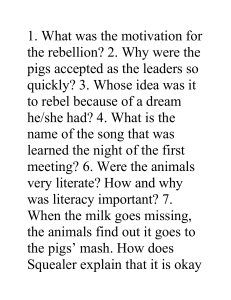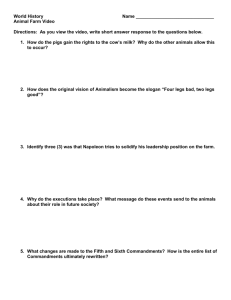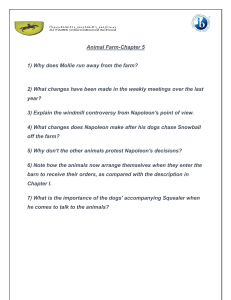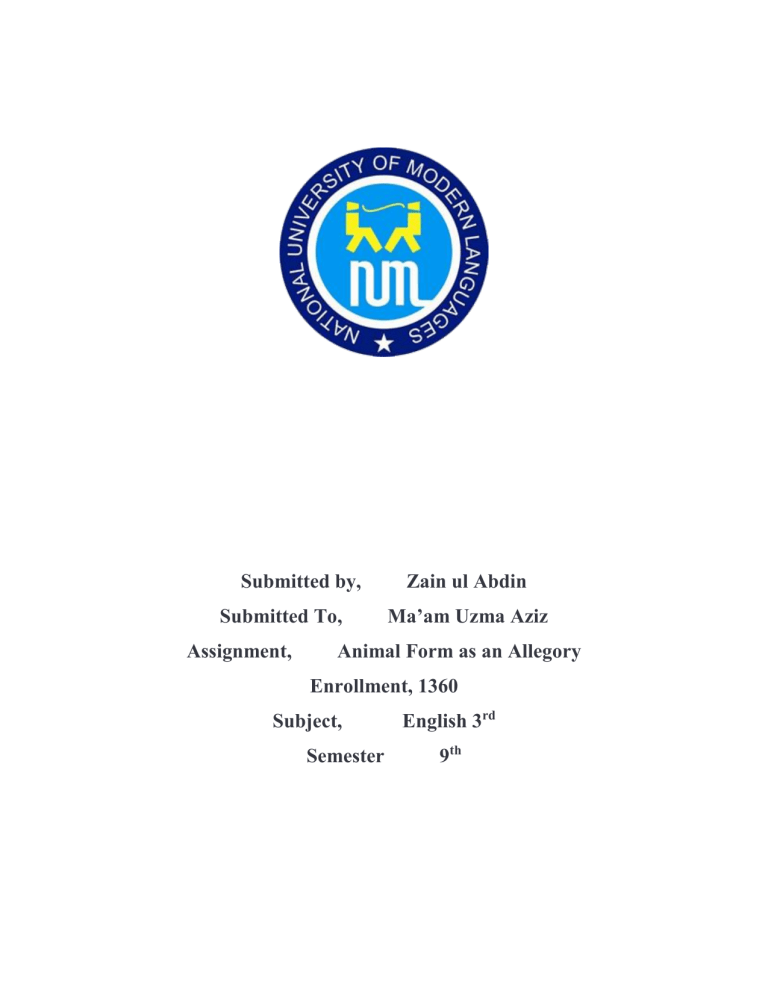
Submitted by, Submitted To, Assignment, Zain ul Abdin Ma’am Uzma Aziz Animal Form as an Allegory Enrollment, 1360 Subject, Semester English 3rd 9th Animal Form as an Allegory George Orwell's Animal Farm is a political allegory that uses a group of farm animals to criticize the occurrences prior to the Russian Revolution in 1917 and the early years of the Soviet Union. The novel begins with the animals of Manor Farm living in oppression under their cruel and drunken owner, Mr. Jones. Led by the clever pig Napoleon, the animals are successful in overthrowing Jones and creating a society where they are all equal and share in their work and profits. As the story progresses, however, the pigs, who have taken on the role of leaders, become increasingly corrupt and oppressive. They begin to hoard food and luxuries for themselves, while the other animals are left to suffer and work harder than ever before. Napoleon and Snowball, the two main characters, represent Joseph Stalin and Leon Trotsky respectively. Napoleon, like Stalin, uses force and propaganda to maintain his power, while Snowball, like Trotsky, is an idealistic leader who is eventually exiled. The other farm animals in the novel represent the working class of Russia, who were initially excited about the revolution but eventually became disillusioned by the new regime. Whiskey, which was forbidden in their Animalism, serves as an example of the corruption of their leaders. The windmill represents the attempt to modernize Russia, and its completion is mismanaged by Napoleon due to his incompetence, much like many of the projects undertaken by the Soviets post-revolution. Squealer, a pig tasked with spreading propaganda and manipulating the other animals, symbolizes the Soviet government's use of censorship and control of the media. The novel powerfully displays the animals' innocence and lack of understanding of human politics, highlighting the cruelty and corruption of the revolution. Ultimately, Animal Farm serves as a powerful allegory for the events leading up to the Russian Revolution, with the pigs representing the ruling class and the other animals representing the working class. In a summary of Animal Farm, George Orwell uses animals to allegorically portray the events leading up to and following the Russian Revolution in 1917. The pigs Napoleon and Snowball, who represent Joseph Stalin and Leon Trotsky, lead the animals in a successful rebellion against their cruel owner, Mr. Jones. The animals then create a new society based on Animalism, an ideology of equality. However, the pigs eventually become oppressive and corrupt, mirroring the Soviet government. Additionally, the windmill symbolizes the attempt to modernize Russia, and Squealer, a pig tasked with spreading propaganda, symbolizes the Soviet government's use of censorship and control of the media. Through this allegory, Orwell conveys the cruelty and corruption of the revolution itself.
